Learn all about the various weapons and how the economy of VALORANT works in the second part of the Entry Frag series.
The first part of Entry Frag taught you everything you need to know about communication. Part two is here to further expand your knowledge by detailing the weapons and economy of VALORANT. Spending credits on guns and abilities, performing actions to gain credits, and knowing when to keep the money in the bank can be the difference between a wild comeback and a one-sided beatdown.
This goes hand in hand with communication. You'll want to be on the same page as your team to ensure your economy isn't in shambles. This means fully buying together or fully saving together. It is also crucial that you pay attention to the credits available for the opposition. It sounds complicated, but we'll make it very simple.
Every VALORANT weapon and its cost
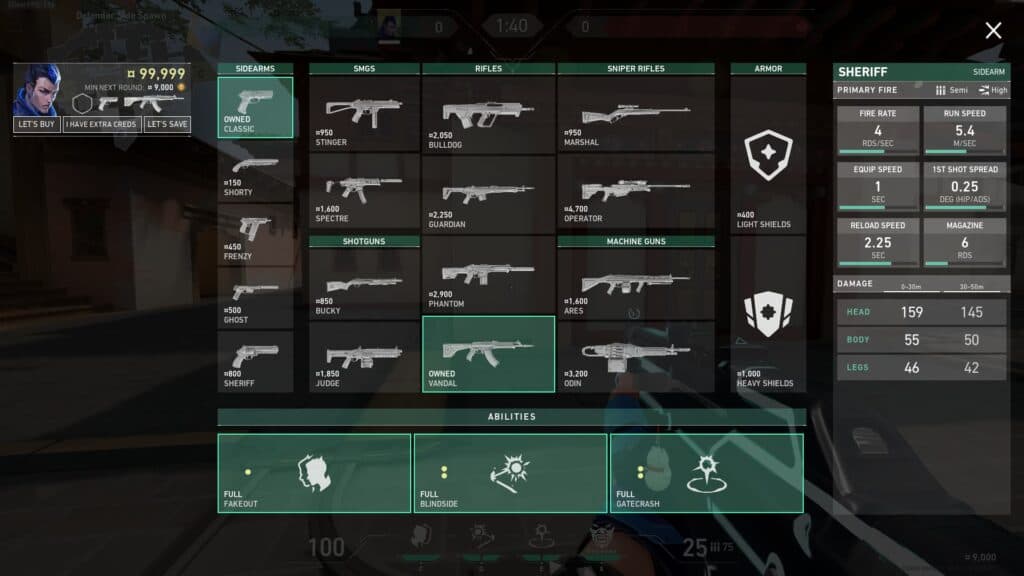
There are six total weapon categories in VALORANT. Every weapon has a purpose, but are not all equal. As well, the cost of each gun varies greatly. Let's go over each category's weapons, their cost, and what you can expect from them.
Sidearms
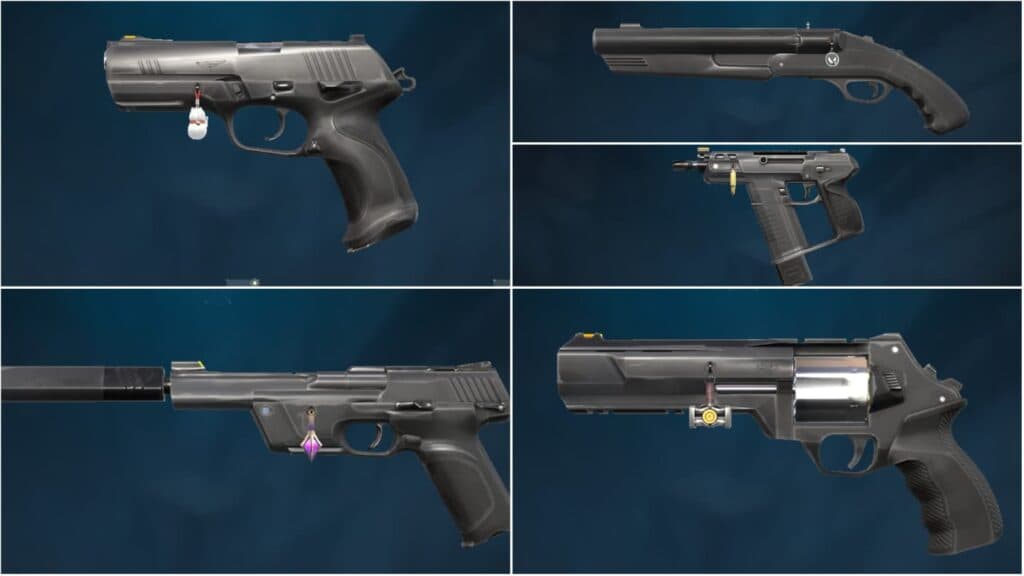
- Classic (Free): The basic pistol everyone begins a round with at no cost. It has an alternative fire option that sends a cluster of shots out at once, much like a shotgun.
- Shorty (150): A sawed off shotgun-style sidearm that only holds two shots at a time. It is devastating at close range.
- Frenzy (450): An automatic pistol that is often utilized while running and gunning.
- Ghost (500): A silenced pistol with great accuracy and damage. Arguably the most useful sidearm in VALORANT.
- Sheriff (800): A powerful revolver that kills with a single headshot from up to 30m.
Shotguns
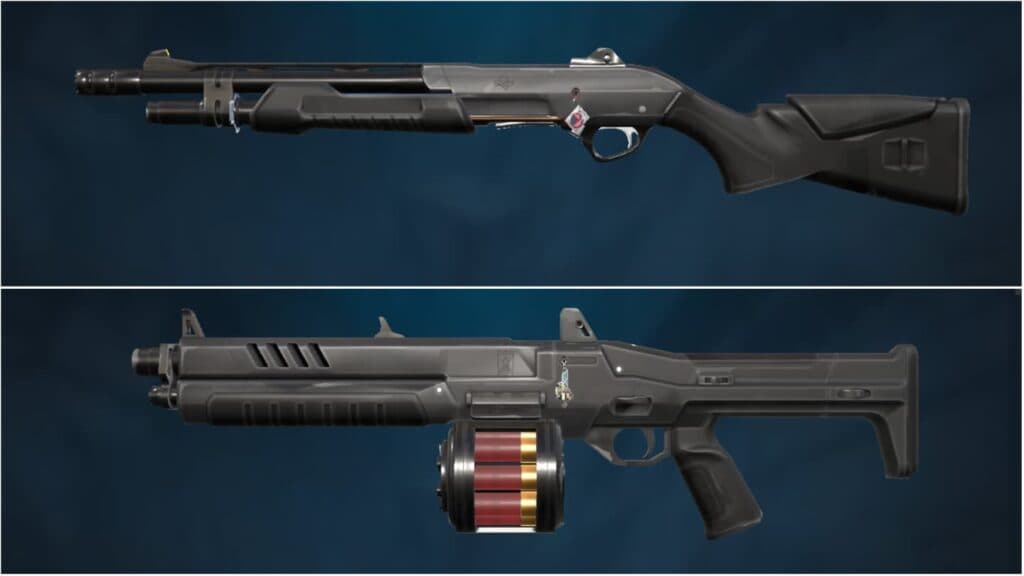
- Bucky (850): A pump shotgun with an alternative method of fire that sends a canister of pellets. The canister detonates after 7.5m for more direct damage, but does no damage until detonation.
- Judge (1850): An automatic shotgun that fires 12 pellets with each shot for massive damage at close range.
SMGs
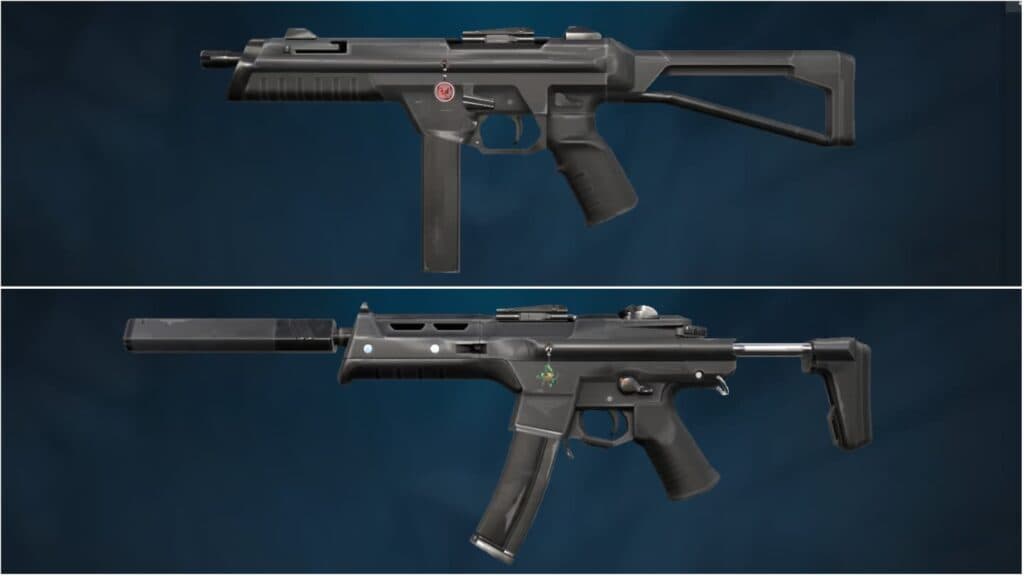
- Stinger (950): A rather erratic submachine gun that delivers a four-round burst if fired while aiming down the sights.
- Spectre (1600): A popular silenced SMG with an ADS function.
Machine Guns
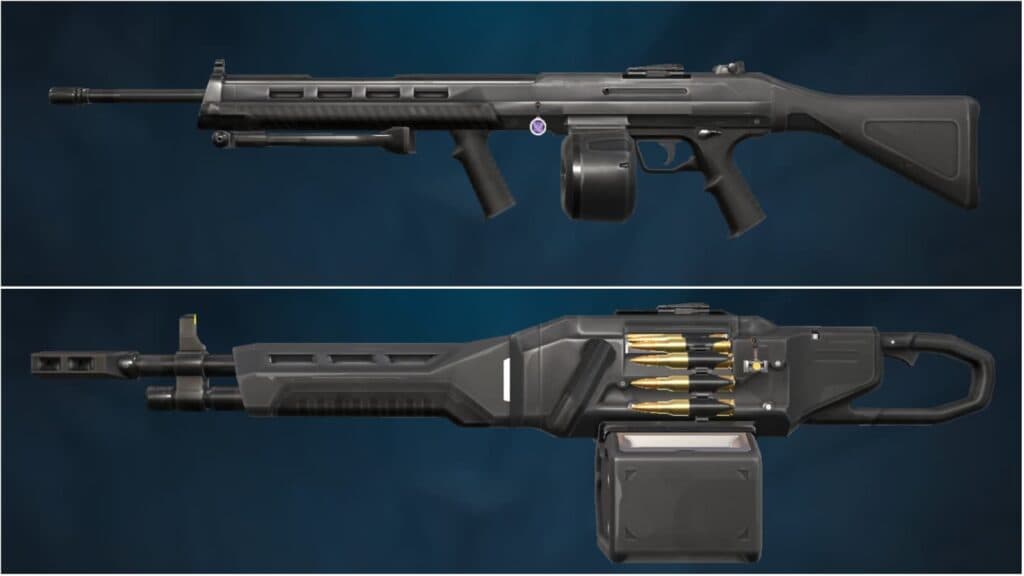
- Ares (1600): A basic machine gun that can fire through walls when applicable.
- Odin (3200): A hefty machine gun that gains increased fire rate when aiming down the sights. It has the highest ammo capacity in VALORANT.
Sniper Rifles
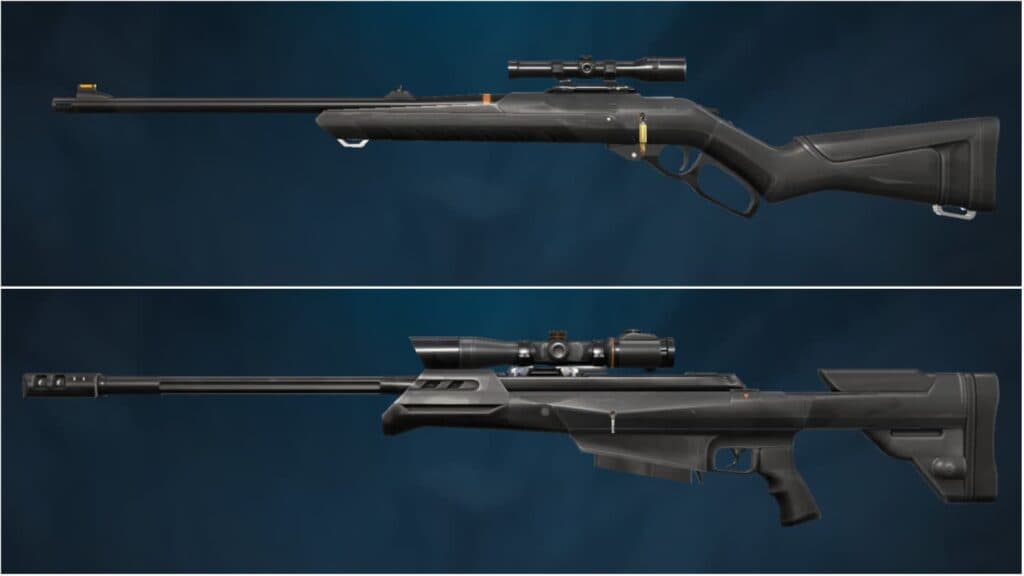
- Marshal (950): A scoped sniper rifle that is an automatic kill with a headshot and does enough to take an opponent down with a body shot if they are without armor.
- Operator (4700): A scoped sniper rifle that will eliminate an enemy with a single shot from the waist up. The most powerful, and most expensive, weapon in VALORANT.
Rifles
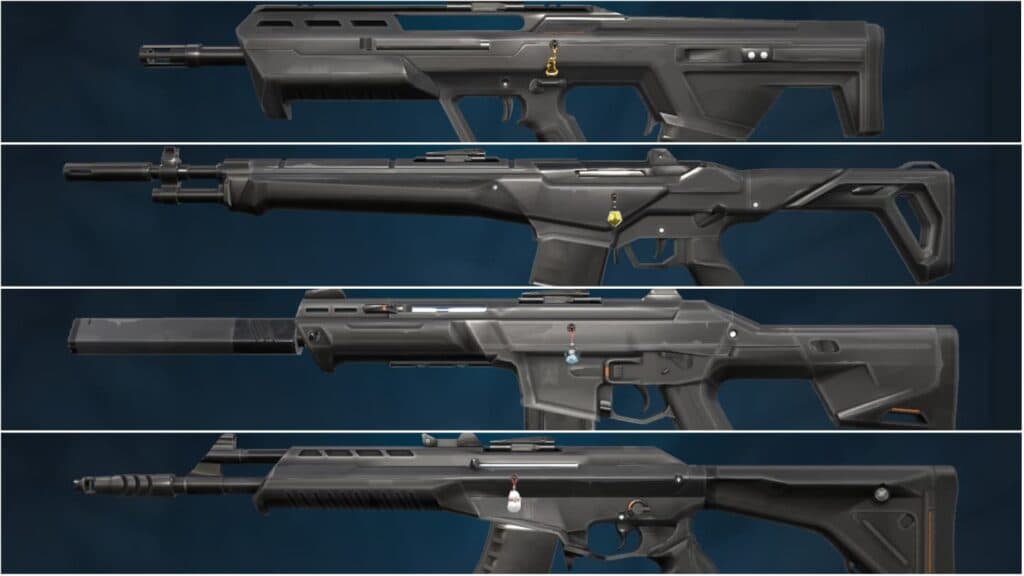
- Bulldog (2050): An automatic rifle that fires a three-round burst when aiming down the sights.
- Guardian (2250): A semi-automatic rifle that isn't very effective when shooting at a body. It is always an instant kill when landing a headshot, however.
- Phantom (2900): A silenced automatic rifle that many players believe is best used on defense.
- Vandal (2900): An automatic rifle with one-shot headshot capabilities. Arguably the best weapon in the game.
How to increase your credits
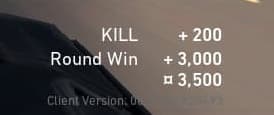
A team does not universally earn credits. There are some instances where credits are delivered to the whole team, but also actions you can do to increase your amount of personal credits. Here are the various ways to obtain credits in VALORANT:
- 800 credits are awarded to every player in the first round of a half.
- Every kill grants 200 credits to the player.
- Planting the Spike gains each attacking player 300 credits.
- Round wins give 3000 credits to each member of the team.
- Earn 1900 for a round loss, 2400 on a streak of two round losses, and 2900 on a streak of three or more.
- If any players survive a round loss, they only earn 1000 credits
All credit allocations take place at the start of the Buy Phase. Unspent credits carry over to the next round, except when sides swap at the half. It is also important to note that every player will start with the same amount of credits during overtime rounds.
Basics of the VALORANT economy
With an understanding of weapons and how to get credits in VALORANT, you can begin piecing together the inner workings of the economy. We'll start with a few different scenarios you'll encounter:
- Eco Round: Also known as a Save Round. The team will buy very little, if anything at all. This is done to save credits for the following round.
- Bonus Round: Typically refers to the third round in a half. Spend little to no credits after winning two rounds in a row, keeping weapons used during the winning rounds.
- Half Buy: Also known as a Light Buy. Spend only some, or half, of your credits to ensure there are enough for the next round. It is often done to allow teammates to gain credits and catch up with the rest.
- Force Buy: Spend as many credits as you can, typically after a round loss, to avoid going on a losing streak.
- Full Buy: Purchase all abilities, full armor, and one of the top tier weapons, such as a Vandal, Phantom, or Operator.
When you spend credits, you can purchase a weapon, either full or half armor, and your abilities. Entry Frag will touch on abilities when we go over the Agents of VALORANT, but you need to know that buying isn't just for firepower. Utility and shields are equally important.
Following the start of a round, you can hold the Tab key to see the scoreboard and how many credits each opposing player began the round with. Will they have to save? Does Jett have enough for an Operator? Is a Full Buy even possible? Looking there can answer those questions and more.

As you play through a game of VALORANT, take note of your spending habits. This will be calculated into a stat known as your Econ Rating. It reveals how efficient you are in terms of damage dealt based on credits spent. If you see a pattern of consistent losses with a low Econ Rating, it might be time to change the way you approach spending.
The economy of VALORANT is not super complex once you've experienced it a handful of times. Try out some Unrated matches before diving into the competitive queue. You'll quickly see how going rogue against the buying standards of the game can have a negative effect.
Previous:
Next: